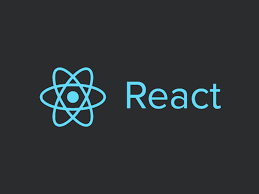Building A Web App With Headless CMS And React

- Published on

Building A Web App With Headless CMS And React
Introduction
In the ever-evolving landscape of web development, utilizing headless CMSs and React for crafting modern web applications has gained significant traction. This combination offers a plethora of advantages over conventional monolithic architectures, including:
Decoupling of Content and Presentation: Headless CMSs empower developers to manage content independently of the presentation layer, granting them greater flexibility in designing customized user experiences.
Reusable Components: React's component-based architecture facilitates the creation and reuse of UI components, streamlining development efforts and saving valuable time.
Enhanced Performance: React's virtual DOM and server-side rendering capabilities contribute to improved web application performance.
Demystifying Headless CMSs
Headless CMSs are content management systems that provide a content API for managing content without dictating how it's presented. This grants developers the freedom to craft custom user interfaces (UIs) using any frontend framework, such as React, Angular, or Vue.js.
Popular headless CMS options include:
- Strapi
- Contentful
- Prismic
- Sanity
- DatoCMS
Understanding React
React is a JavaScript library specifically designed for building user interfaces (UIs). Its component-based approach simplifies the creation of reusable UI components. Additionally, React is renowned for its virtual DOM, which optimizes web application performance.
Building a Web App with Headless CMS and React
To construct a web app using headless CMS and React, follow these steps:
1. Select a Headless CMS: With a diverse range of headless CMSs available, carefully evaluate each option based on your specific needs. Consider factors like ease of use, feature set, and pricing.
2. Set Up Your Headless CMS: Once you've chosen a headless CMS, follow the setup instructions and establish your content model. The content model outlines the types of content your CMS will manage.
3. Create a React App: Utilize Create React App or a similar tool to create a new React app.
4. Integrate Your React App with Your Headless CMS: Employ the headless CMS's API to retrieve content and display it within your React app.
5. Deploy Your Web App: Upon finalizing your web app, deploy it to a hosting platform like Vercel or Netlify.
Example Project: Building a Blog App
Let's illustrate the process of building a simple blog app using Strapi and React:
1. Install Strapi: Follow the Strapi website's instructions to install Strapi.
2. Create a Content Model: Define a content model for your blog posts, including fields for post title, content, and author.
3. Create a Blog Post: Craft a new blog post using the Strapi admin dashboard.
4. Create a React App: Utilize Create React App to establish a new React app.
5. Install the Strapi Client: Integrate the Strapi client library into your React app.
6. Fetch Blog Posts: Employ the Strapi client to retrieve blog posts from your Strapi backend.
7. Display Blog Posts: Display the fetched blog posts within your React app.
8. Deploy Your Web App: Deploy your web app to a hosting platform.
Conclusion
Harnessing headless CMSs and React for web application development is an excellent approach to creating modern, flexible, and performant web applications. Decoupling content and presentation empowers developers to design custom UIs, while React's component-based nature facilitates the creation of reusable UI components.
This blog post has provided an overview of building a web app with headless CMS and React. If you encounter any questions, feel free to leave a comment below.